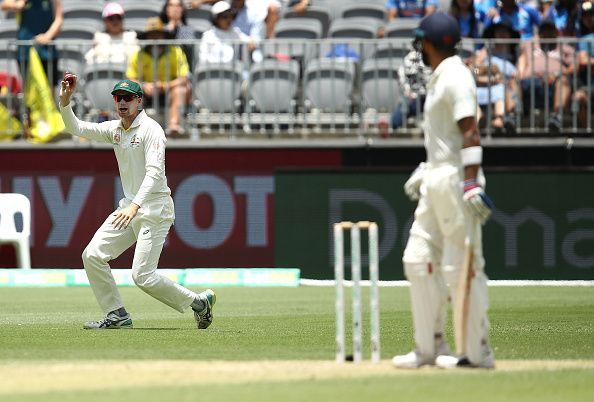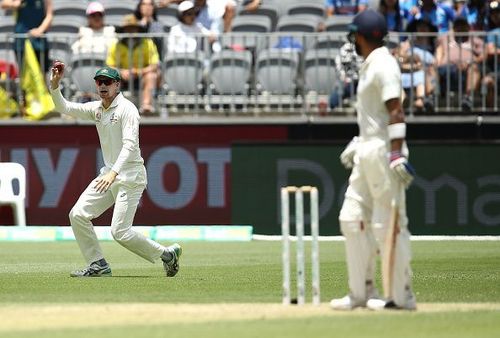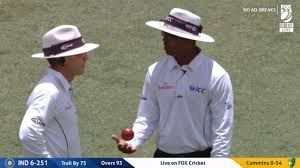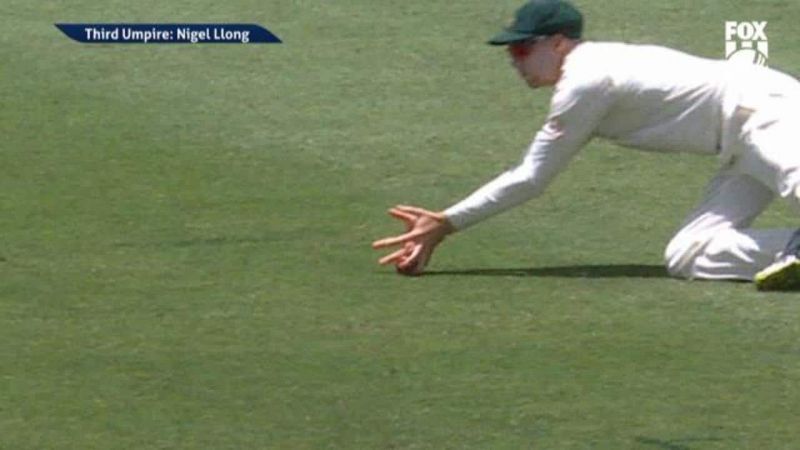
India vs Australia 2018/19, Soft signal: Explained

Kohli batting exceptionally on 123, Pat Cummins to Virat Kohli. Bowls it wide of off stump and Kohli goes for the drive through the off side, nicks it, looks behind in anticipation and sees Handscomb diving forward at second slip and confidently claiming a low catch with all the Australians going up in the joy of getting a champion batsman out.
Kumar Dharmasena's doubts on the correctness of the catch aggravated with Kohli, who well within his rights, stood his ground. Dharmasena goes to Chris Gaffaney at square leg, ha a chat and draws a rectangular box in the air and then raises his index finger.
What it meant was that the umpire thought it was out and was asking his TV umpire if technology told otherwise. Perhaps the decision could change the course of the series.
After watching the best available angles and slow-motion replays, Nigel Long, the third umpire couldn’t find any conclusive evidence to prove that the on-field umpire was wrong and adjudged the batsman out much to the agony of Virat Kohli and the Indian fans.
What is soft signal?

Now, what is soft signal? It is quite simple. When an umpire decides to consult the TV umpire regarding a close catch, the on-field umpire has to come up with a decision based on his instincts. Basically, the on-field umpire makes his decision and asks the TV umpire to make sure that he was not wrong. So, after the on-field umpire makes the signal for the third umpire, there is another signal (out or not out), which is the soft signal.
The laws of ICC state that the soft signal can be overturned only when there is conclusive evidence that the soft signal is wrong. In the case of Virat Kohli’s dismissal, Dharmasena’s soft signal was ‘out’ and hence Nigel Long had to be absolutely sure that the ball had touched the ground to adjudge the batsman as ‘not out’ which the TV umpire wasn’t.
Why the soft signal?

Even after having so much technology, why do we still need soft signal from the on-field umpire? After watching the replays of Virat Kohli’s dismissal, every Indian fan would have felt that the ball was touching the ground and the Australians would suggest it was a clean catch. That was how close it was and equally inconclusive for someone who has to make a decision. Hence, the soft signal becomes important.
The main reason for the ambiguity is the video being a two-dimensional representation of the three-dimensional scenario. That is also the reason why third umpires ask for a side-on view along with the front-on view while checking for edges using Snicko as the front view cannot assure you of whether the sound is off the bat or off the pad. The camera angle, depth in the frame, number of frames per second, all affect the perspective in which the ball is seen. Even with the best angles and slow-motion replays, many times, one could not have been sure of the catch as was the case with Handscomb’s catch along with many others.
Also, the quality of broadcasting varies with different countries and hence the quality of replays is not the same which is unfair. There have been many instances before the introduction of the soft signal rule where the batsman would be adjudged ‘not out’ just out of uncertainty in the evidence provided by the replays.
Former English cricketer turned broadcaster, Tony Greig had once demonstrated using an experiment where the replays led into a misconception that the ball had touched the ground even though it was cleanly into the palms of the fielder. It is a fundamental of the game that the umpire has the final say in the verdict. So, when the technology cannot give you the desired level of accuracy why not go with the umpire’s instincts?